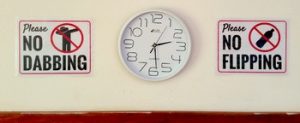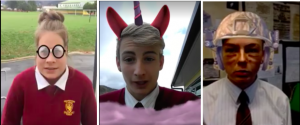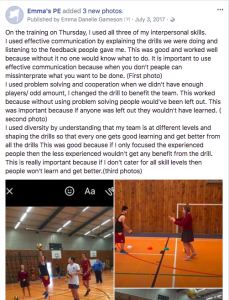You know when you have hit upon the right flow when it is easy and yet fits into a problem niche like a glove.
Our cluster of schools have a learning cycle we have developed KNOW/ACT/REFLECT and when we need to include evidence the KAR becomes KARE. We were using this to engage our teachers and learnings in a shared language around the learning cycle and this was going very well ….but …… it needed supercharging!
Teachers were quite rightly inquiry strategy jaded and yes this seemed (although a very good one) to be just another version of an inquiry model. Enter flipped learning – or in our case inflip learning and BOOM innovation central!
Here is a short video explaining this learning model
It is important to note that this model is fluid and not linear as at any moment a learner may be at any stage of the process.
Key guiding questions to each phase are outlined below
Know Phase

| Teacher | Learner |
| What is the distilled knowledge and or skills I need to impart to the learner ?
What is the best way to model this? What do I need to create or curate for this ? How will I make this resource accessible ? How will I evaluate the effect? What do we know about the students next steps in learning? What do we know is the best practice for delivering the needed content, skills and competencies. What do we know about the curriculum area? What do we know about the digital options? These ideas build on the TPACK model from Mishra & Koehler, 2006. http://www.matt-koehler.com/tpack/tpack-explained/ |
What am I learning?
Why am I learning? How will I know I have understood this? How can I re access this if I need to? |
Act Phase

| Teacher | Learner |
| What active learning am I promoting ?
How can I triage the learning levels from the previous phase? How is the knowledge being applied? How can we dive deeper? Relationship based teaching What are the planned for deliberate acts of teaching and steps in learning? Is there any pre learning / resource gathering etc that the teacher needs to do? What are the learning intentions and success criteria for the lesson? What are the actions that the learner will be expected to complete? Using the SMAR model to construct lessons that use the affordances of the digital immersion for best leverage. http://www.elearning.tki.org.nz/Professional-learning/Teacher-inquiry/SAMR-model |
What can I do with my knowledge?
What do I need to practice and develop? How can I utilize my teacher time ? Go back and re use the flipped resource if needed? |
Reflect Phase

| Teacher | Learner |
| Formative or Summative ?
Am I gathering evidence? Mastery ? Were the resources / learning experiences effective? What does this change for next time ? How successful was the teaching and learning experience? Use of both teacher and learner voice, assessment data and SC reflections information. What is now the next step for teaching and learning for the student/s? How did the activity measure on the SMAR scale what could be changed to move further? |
Where to next?
Do I know enough? Do I want to explore more? Has my outcome demonstrated my learning? How can I share this ? Create a new flipped resource as evidence of learning ? |

The individual space is all about the Know phase while the group space is used for the active learning time or ACT phase. The way the flip learning meta strategy supports teachers to create a learning process for students is super energising for educators and just makes sense to parents who often reflect on this as “wishing they had been taught like this.
My name is Beth Lamb and I’ll be presenting at both FlipCon NZ (Auckland 7, 8 Sept) and FlipCon AUS (Melbourne 14, 15 Sept). I’d love you to come along and say hi – www.flipconaus.com






